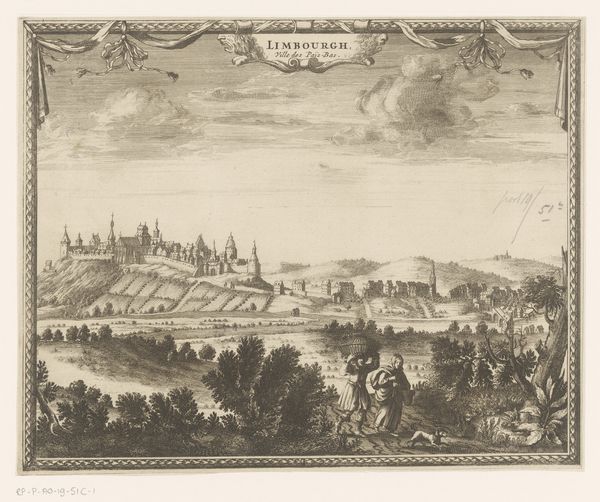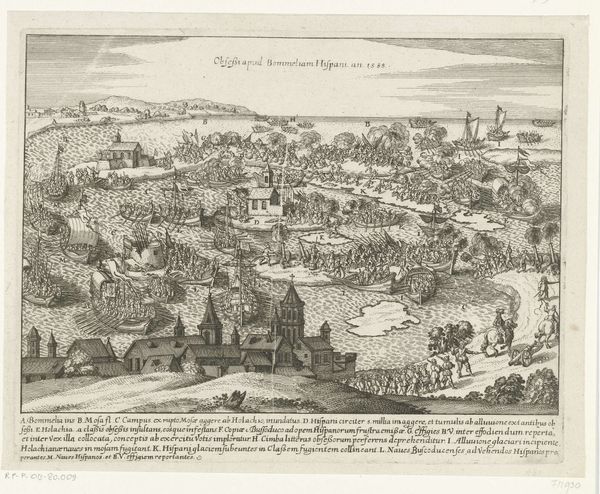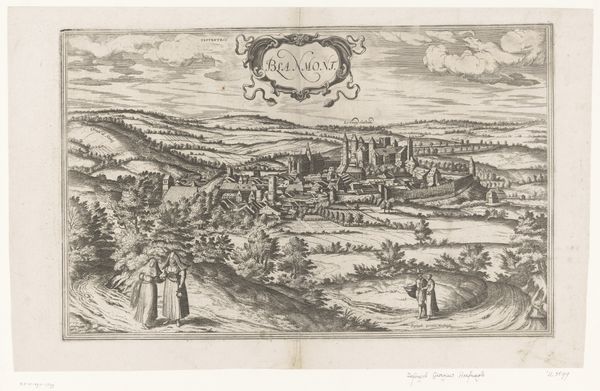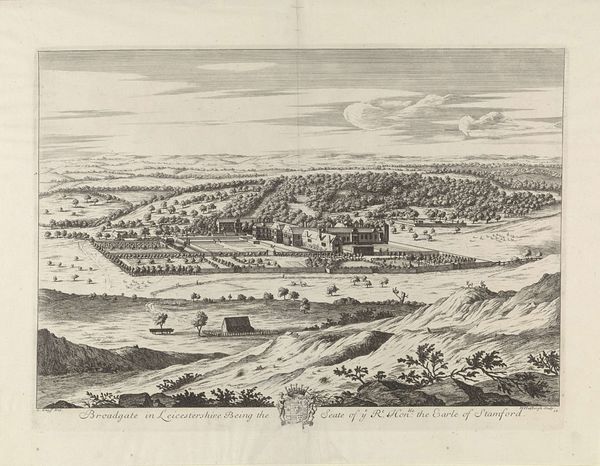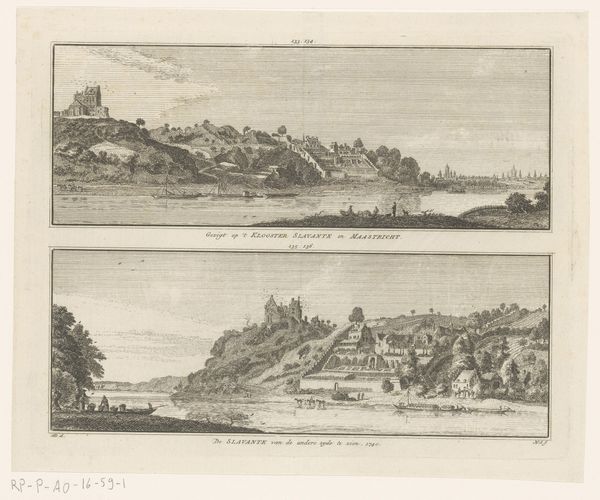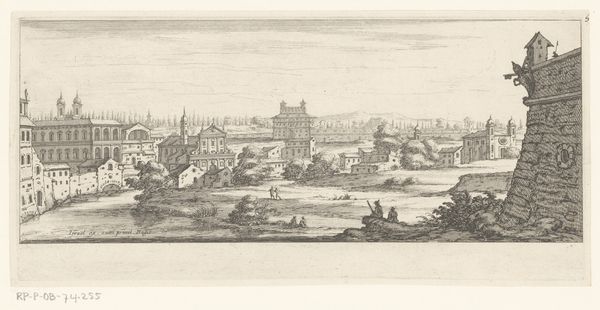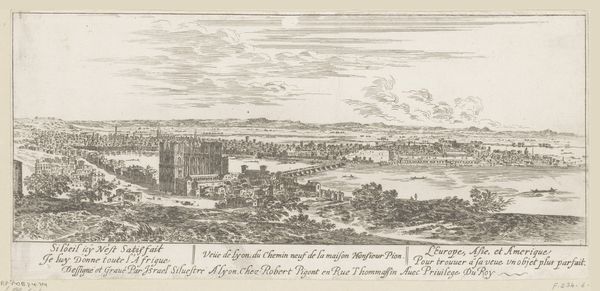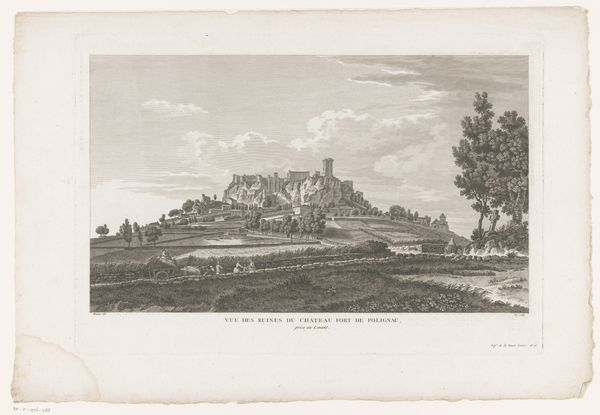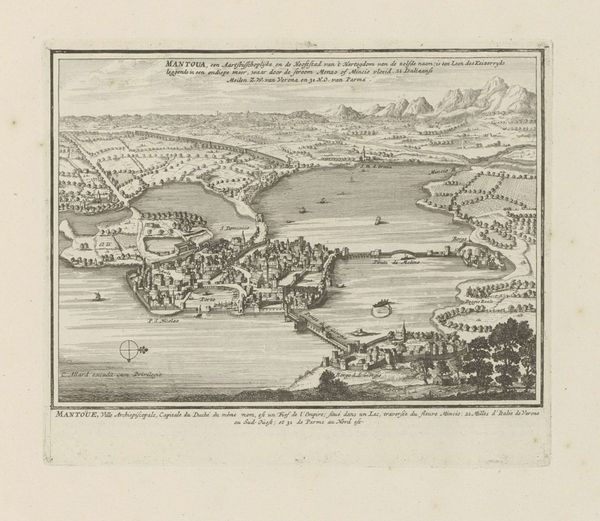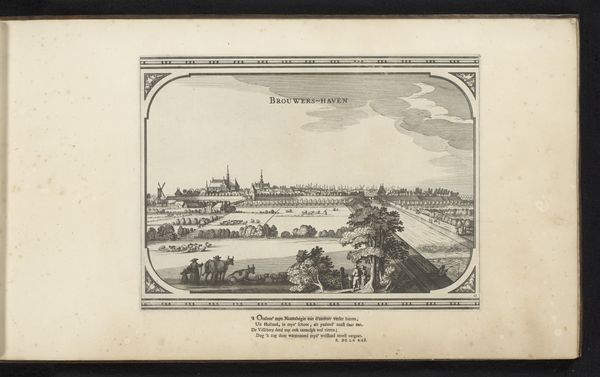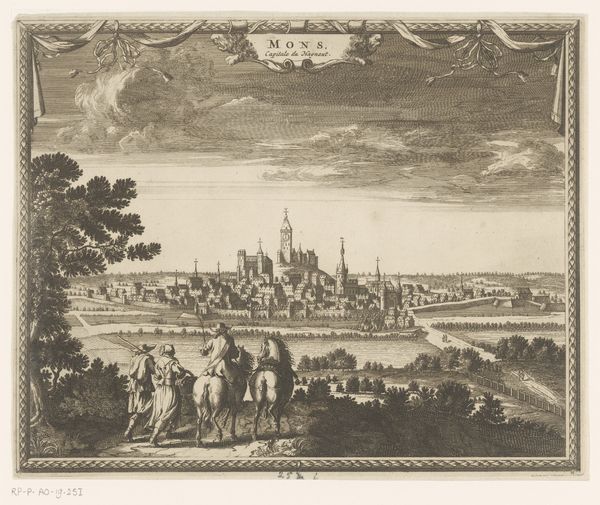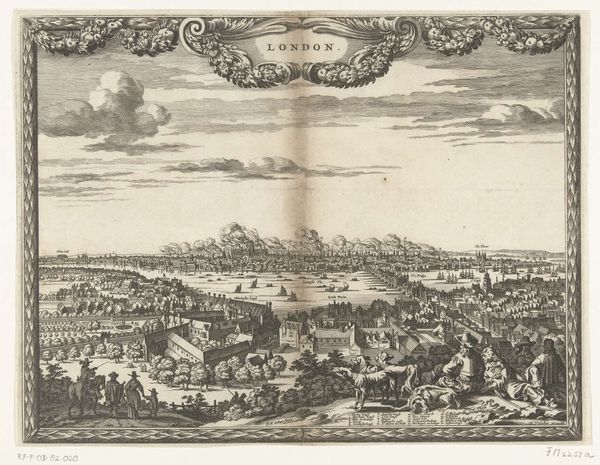
print, engraving
#
baroque
# print
#
pen sketch
#
pencil sketch
#
landscape
#
pen-ink sketch
#
pen work
#
cityscape
#
engraving
Dimensions: height 244 mm, width 343 mm
Copyright: Rijks Museum: Open Domain
Curator: Welcome to this captivating cityscape by Joan Nieuhof, "View of the Three Forts of Palembang," dating back to 1682. The work before us is a print, showcasing the artist's skills in engraving. Editor: The detail is astounding. The somber and restrained grayscale palette lends a kind of stoic weight to the entire composition. Curator: Indeed, there is so much embedded within this single image. Palembang, now part of Indonesia, was a major trading hub at the time, deeply entwined with the Dutch East India Company. This print offers us insights into the dynamics of colonial power, resource extraction, and cultural exchange. Editor: Looking at the three forts that command the foreground of the image, I am curious about their design and purpose. Notice how they mirror each other and create visual and psychological harmony despite clearly serving as imposing instruments of colonial influence. It's as though the forts stand as visual symbols for stability and control. Curator: That's a very perceptive observation. One cannot overlook the way the print subtly legitimizes European expansionism through cartographic accuracy. Consider the symbolism present here as a statement reflecting its socio-historical background and all that implies: colonial authority over land. The composition emphasizes their dominance. Editor: Note the tiny human figures populating the shorelines and filling boats upon the river. Their diminishment serves to bolster that emphasis as well as amplify the perceived grandeur of the three Forts that rise from that cultural framework of land. This cityscape becomes a psychological portrait of colonial influence through symbols both stark and implicit. Curator: And that contrast creates an unavoidable discourse—power and perspective, dominance and vulnerability. The print embodies a narrative of Dutch mercantile expansion while erasing the human cost imposed upon local populations. How might viewers from different backgrounds and identities interpret this artwork today? Whose perspectives do we center when engaging with such colonial artifacts? Editor: Indeed. Ultimately, I am left feeling aware that symbols shape the historical narratives, whether conscious or otherwise, reflecting collective cultural memories that inform modern discourse. Curator: Precisely, it challenges us to re-evaluate history with awareness and contextual depth and prompts dialogue between past injustices and their continued impacts on global politics.
Comments
No comments
Be the first to comment and join the conversation on the ultimate creative platform.
